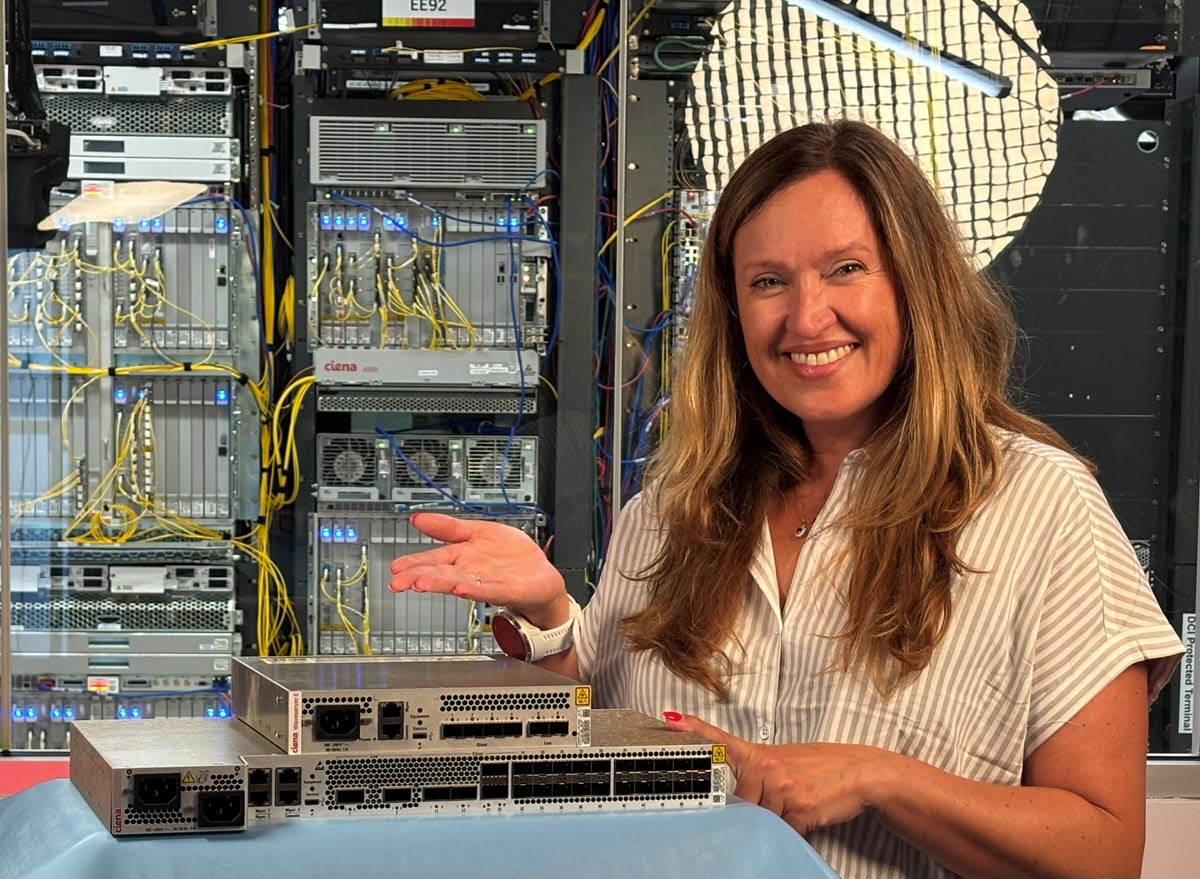Latest Articles

Article
A look back: Ciena’s top milestones of 2025
From 1.6T becoming real to AI reshaping how networks are built and run, here’s a look at the milestones that defined Ciena’s 2025.

Article
A well-defended and resilient security operation: ...
When it comes to cybersecurity, the finish line keeps moving. Threats get faster, rules become more complex, and the expectations ...

Article
Scaling transport networks - The transition to Se ...
While legacy transport technologies such as MPLS-TP, RSVP-TE, and LDP have served well in the past, it is Segment Routing that is ...

Article
Beyond bandwidth: How Ciena Services keeps neosca ...
Neoscalers excel at delivering massive GPU clusters and LLM platforms to tackle the toughest AI compute challenges. But what abou ...

Article
How Ciena builds trust through a “confidently com ...
In today’s fast-paced digital world, trust isn’t just important; it’s essential. In this blog, Ciena’s Global Head of Security Go ...

Article
Set yourself up for AIOps success with clean netw ...
AI promises to significantly enhance network operations. But is your network data clean enough to provide a solid foundation for ...

Article
Key innovation in Passive Optical Network (PON) t ...
PON has seen a significant evolution over recent years, Ciena’s Wayne Hickey reflects on an exciting new area and data center out ...

Article
Shaping the future of long-distance quantum-secur ...
Paulina Gomez speaks with Farzam Toudeh-Fallah, who leads Ciena’s Quantum Communications R&D team, about the need for quantum-sec ...

Article
Optical networks: Powering AI innovation for neos ...
Neoscalers are rising as a new class of network operators—at the forefront of the AI revolution with unique challenges and opport ...

Article
Introducing Waveserver E-Series: Purpose-built fo ...
We’re expanding the Waveserver family with the brand-new Waveserver E-Series—compact, energy-efficient platforms designed to exte ...

Article
AI is rewriting the rules of networking: What it ...
AI is redefining the way operators of all kinds design, scale, and operate their networks. Ciena’s Brodie Gage explores how optic ...

Article
Enterprise AI is booming. What does it mean to se ...
As enterprises race to turn AI into growth and a competitive advantage, Ciena’s Francisco Sant’Anna explains how service provider ...

Article
Securing critical data in the quantum era: Why ac ...
Quantum computing is closer than we think, promising breakthroughs in healthcare, finance, and beyond. However, it also threatens ...

Article
What’s new in coherent routing: Insights you can’ ...
Coherent routing has seen a significant evolution over the years, particularly with the advent of the 800G ecosystem. Ciena’s Iva ...

Article
The next AI frontier: AI agents who reason and ac ...
Reasoning is the third frontier of the AI era, following perception AI and generative AI (GenAI), with its proliferation of Large ...

Article
DIY or outsource? 4 key questions to ask before s ...
As AI-driven applications reshape network demands, getting the design and deployment right from day one is critical. Phil Corey o ...

Article
Ciena update on 448G innovations and the path to ...
Learn about where the industry stands with the ongoing development of 448G/lane technology, and how innovation and collaboration ...

Article
Wave Services: Powering the future of connectivity
From hyperscaler growth to AI-powered networks, wave services are the unsung heroes enabling tomorrow’s connectivity. Explore wha ...

Article
Survey says: The era of IP and optical convergenc ...
The results of a Heavy Reading (now part of Omdia) global survey of IPoDWDM adoption among CSPs highlight the importance of hardw ...

Article
Want faster, greener connectivity? Let's talk abo ...
As AI drives a growing demand for high-speed connectivity, network operators are increasingly challenged to deliver reliable perf ...

Article
Our security foundation: Ciena's strategic priori ...
Ciena’s CISO, Ryan Hammer, explains our approach to providing the secure foundation our customers and partners expect and deserve.

Article
From genomes to generative AI: How MOX and Ciena ...
In today’s digital economy, data is more than just information—it’s the foundation of innovation. Ciena’s Kevin Sheehan shares in ...

Article
Network transformation: Understanding the challen ...
Roy Rubenstein, Consultant at LightCounting Market Research, outlines the challenges and opportunities CSPs face amid ongoing mar ...

Article
Out-of-band, in focus: Tackling complexity, space ...
Mark Bieberich explains how Ciena’s data center out-of-band management (DCOM) solution simplifies operations, improves scalabilit ...




